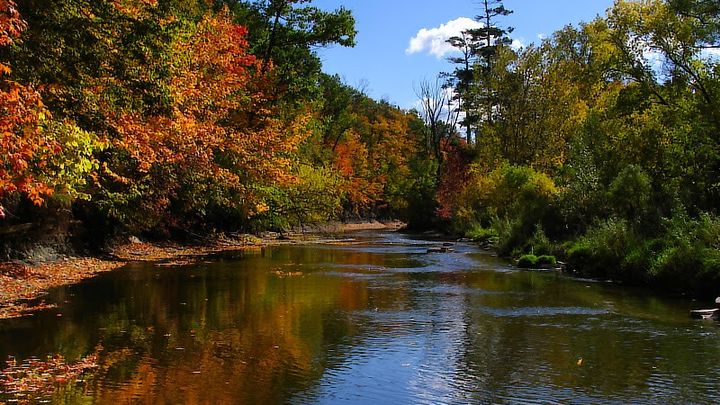
Water Quality Monitoring Ontario
Donation protected
Water is life.
Fresh water is the lifeblood of Ontario and Canada. The Great lakes and the vast majority of rivers and streams that feed them were once all drinkable and home to complex, varied and stable ecosystems for many thousands of years of human settlement after the last ice age. Over the past 150 years there has been a dramatic and devastating loss of biological diversity and degrading of water quality. By comparison, this cannot be understated. Although solutions to water pollution are technically simple and economically feasible, clean water is a political “hot potato”. Few if any are willing to accept responsibility and fewer still implement long term, research based solutions. Here, in Southwestern Ontario problems are magnified due to the low topography, rich soils, lack of forest cover, intensive urban and agricultural development and lack of effective regulation of nutrient outflows. Added to this mix are the cuts to core regulatory funding that included extensive source water testing. The regulatory system we have now does not seek to prevent pollution, but only mitigate point and non point sources after runoffs have occurred. Without monitoring, most persistent nutrient outflows go unchecked and unnoticed until secondary effects like cyanobacteria blooms turn our once drinkable waters, toxic green.
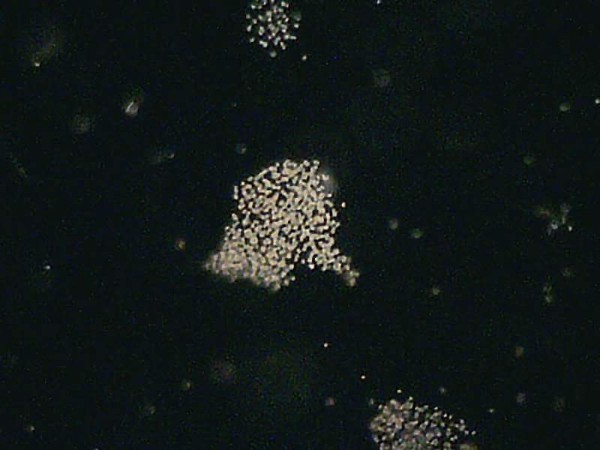 microcystis, 200x (source Rondeau Bay)
microcystis, 200x (source Rondeau Bay)
Most have read, heard or have seen the effects of excessive nutrient pollution. This leads to lakes and bays experiencing eutrophication, which is essentially a shutting down of the ecology due to lack of dissolved oxygen. Both Canada and the U.S. recognize the massive scale of this problem and have cosigned the Great Lakes Water Quality Agreement http://www2.epa.gov/glwqa
There are some huge nutrient sources like the Maumee River and Thames River that hold bi-national significance. Rondeau Bay and the surrounding subwatershed also have serious pollution problems, but aren’t an international priority.
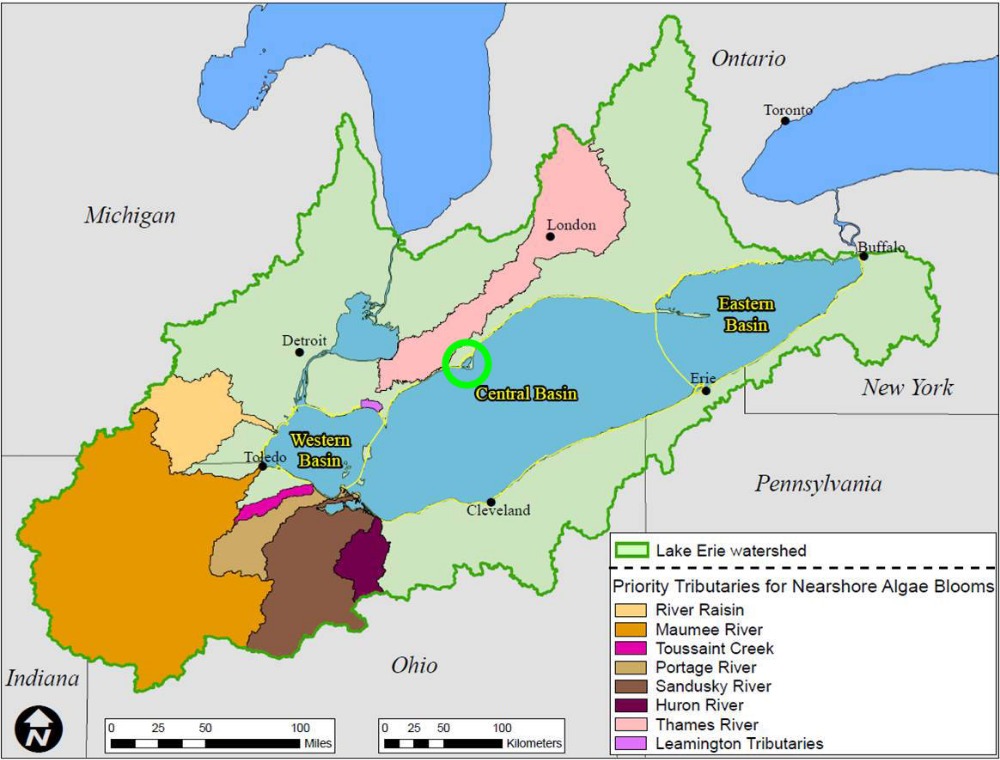 Priority Areas serviced by the GLWQA
Priority Areas serviced by the GLWQA
 Much of this area is outside of priority jurisdictions.
Much of this area is outside of priority jurisdictions.
This short video, shows a very green Rondeau Bay
Microcystis from Rondeau Bay, Sept. 27th 2015

The next step is to regularly test streams and rivers within the Rondeau Watershed around Chatham Kent for nutrients.
Further below, I'm going to present a funding proposal for a Citizen-Based Water Quality Monitoring Program.
First though, some I'd like to outline some of our water quality issues, who are being affected and some of the work already completed towards solutions.
The image below shows the present extent of the Ontario stream monitoring network .
 Monitoring in the lower Southwest is sparse. Zooming into Chatham Kent (lower left)
Monitoring in the lower Southwest is sparse. Zooming into Chatham Kent (lower left)
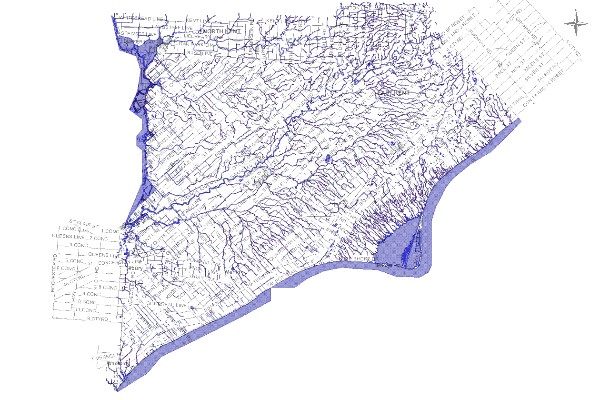 The image shows over 4000km of streams in Chatham Kent. Many are sources of nutrient pollution(nitrogen and phosphorus) along the Thames and Sydenham Rivers, Lake St Clair, Rondeau Bay and Lake Erie.
The image shows over 4000km of streams in Chatham Kent. Many are sources of nutrient pollution(nitrogen and phosphorus) along the Thames and Sydenham Rivers, Lake St Clair, Rondeau Bay and Lake Erie.
Chatham Kent is like a giant kidney, filtering into the lifeblood of our planet, Water.
This once great ecological infrastructure is being slowly dismantled.
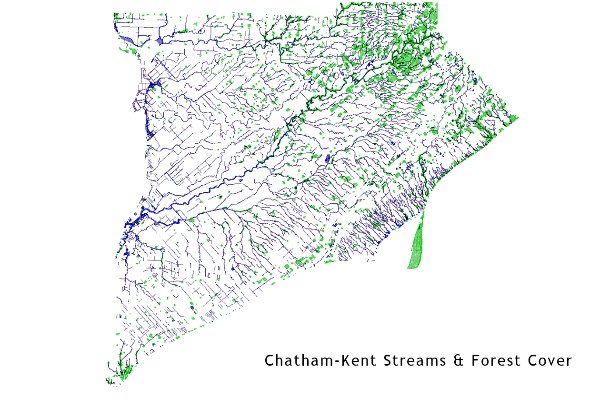
Over 96% of the once great forests have been cleared for export driven agriculture.
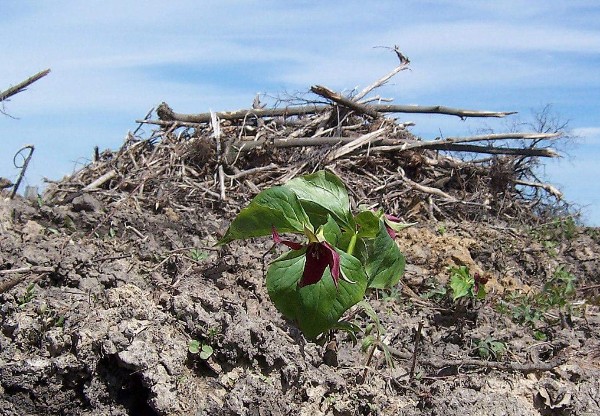
Marshes and estuaries have been hardened with broken concrete waste.
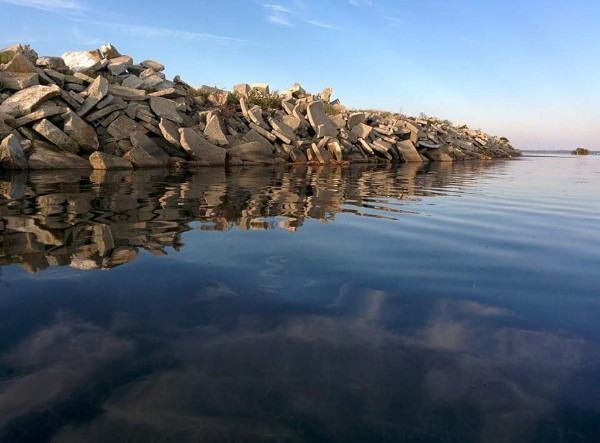
Agricultural "Best Management Practices" are only occasionally applied.
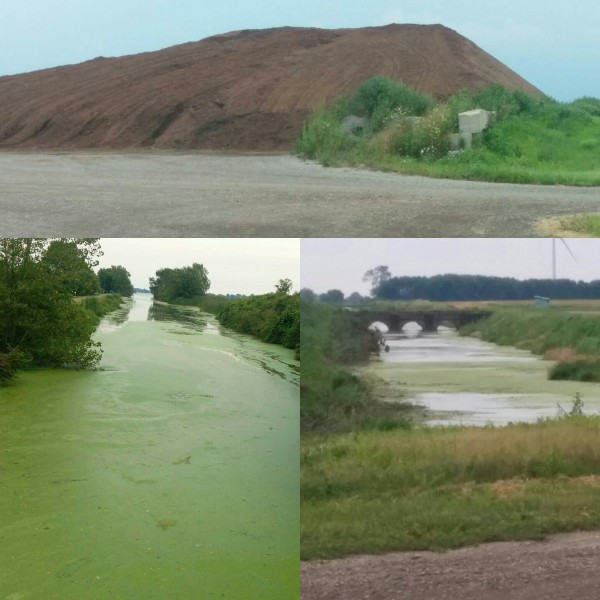 (compost dump leaching into Rondeau Bay)
(compost dump leaching into Rondeau Bay)
Expensive remediation projects often remain untested and uncertified.
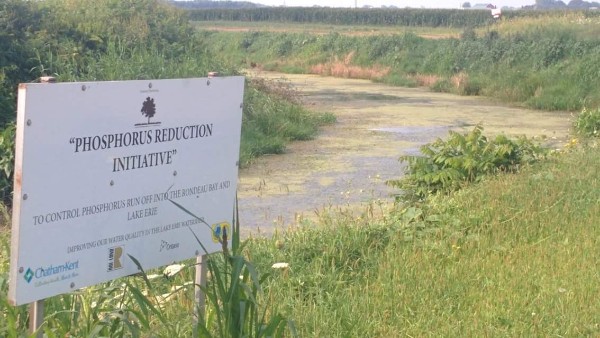
For those living in cities, water quality has a real value.


"The public needs to know that there is a measurable return on public investment."
That's what publishing the results of water sampling and analysis does. Using the ethos of honesty, transparency, open questioning, reliance on evidence and peer review a well informed public can drive public policy.
So let's start with some comparisons.
This is what a stream should look like. The water is clear with some tannins with lots of fish, amphibians, invertebrates and a variety of emergent plants.
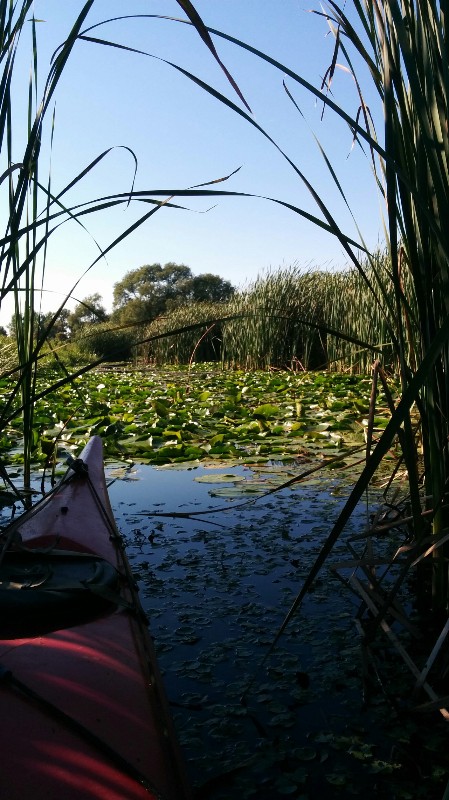 (Willow Creek)
(Willow Creek)
Here's another healthy stream in Chatham Kent, Clear Creek shaded and filtered by the forest.

Some streams have higher levels of Phosphorus and Nitrogen from agricultural and urban runoff...
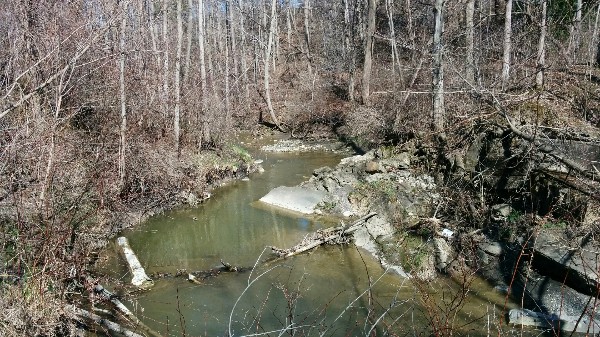 (Morpeth Drain, spring)
(Morpeth Drain, spring)
...while others have much higher levels.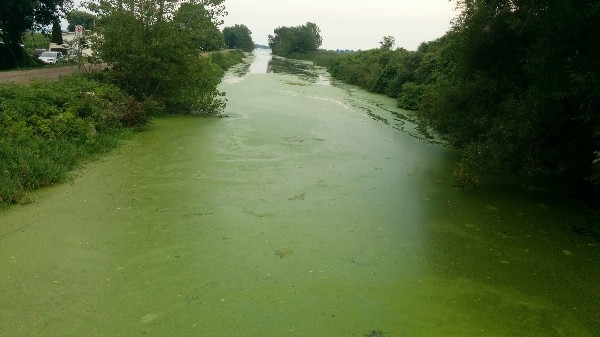 (3rd Concession Drain , summer)
(3rd Concession Drain , summer)
Many agricultural areas have achieved a balance. Some algae, some invasives, but generally heathy.
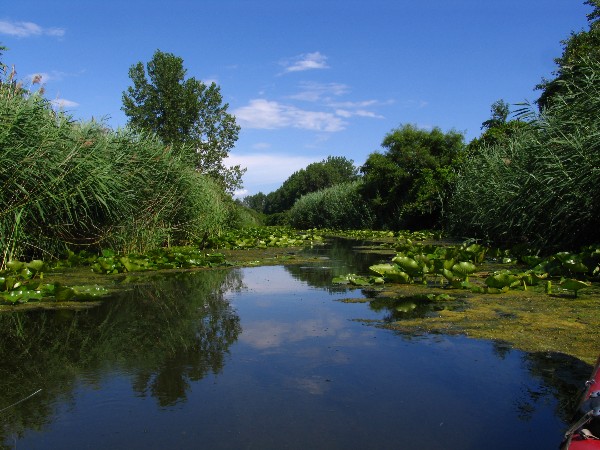 (Tributary of the Snye )
(Tributary of the Snye )
Over time, the runoff of these nutrients can pollute Lake Erie and Lake St Clair, producing huge toxic algae blooms.

(Clearville Oct.2011)
When the algae dies during the late fall it sinks to the bottom and decays. This uses up all of the oxygen, below the "thermocline", a layer of cold water at the bottom of the lake. This decay can also produce toxic hydrogen sulfide.
The following years, when the surface waters cool in early autumn, the oxygen depleted, toxic water below the thermocline is displaced by the sinking cool surface waters.
An entire near-shore ecosystem can collapse as this 2012 photo taken in south Chatham-Kent shows.
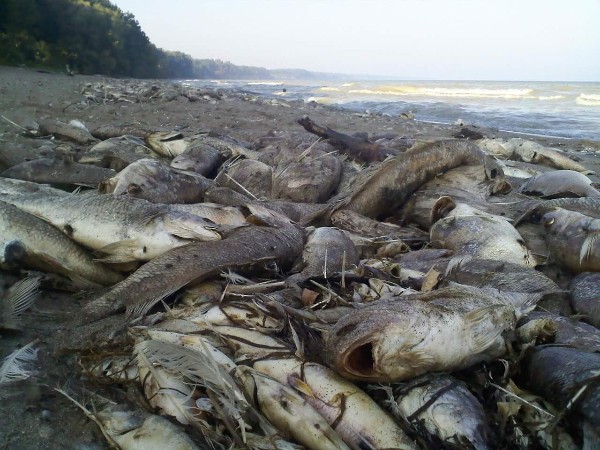
Below you can see the 2012 progression of the swirl of black oxygen depleted, toxic water that killed nearshore fish over a 50 km stretch of the Lake Erie shoreline.
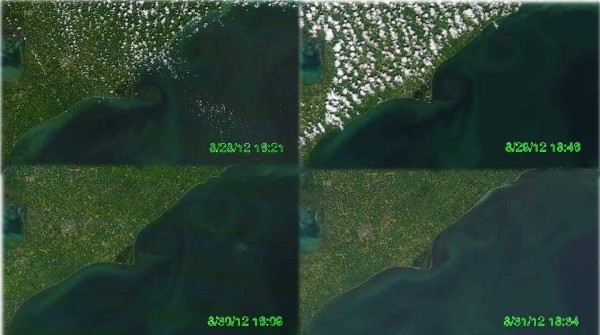
Many vertebrate species are affected by water quality. Some are very sensitive.
 Bald Eagles fish and nest along the Erie Shore and Thames and Sydenham Rivers.
Bald Eagles fish and nest along the Erie Shore and Thames and Sydenham Rivers.
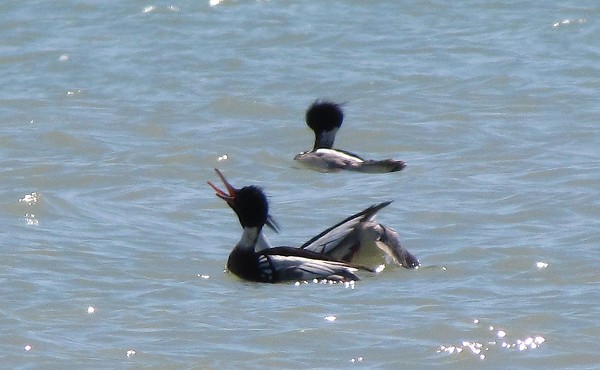 Red Brested Merganzers bioaccumulate aquatic toxins.
Red Brested Merganzers bioaccumulate aquatic toxins.
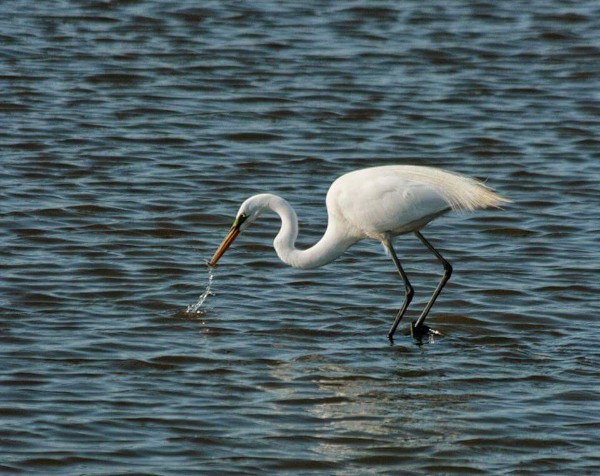 The same with Great Egrets,...
The same with Great Egrets,...
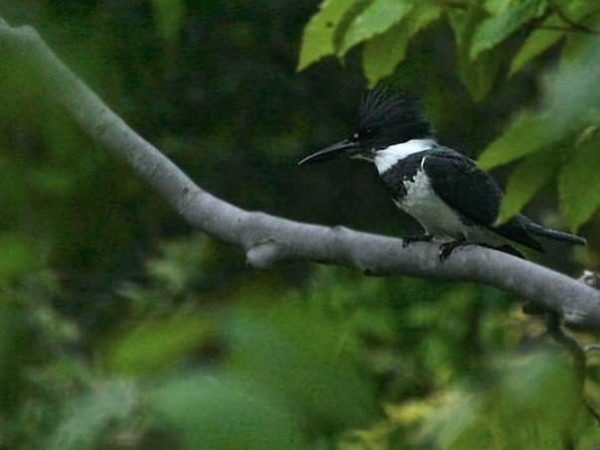 Kingfishers,...
Kingfishers,...
 Wood Ducks...
Wood Ducks...
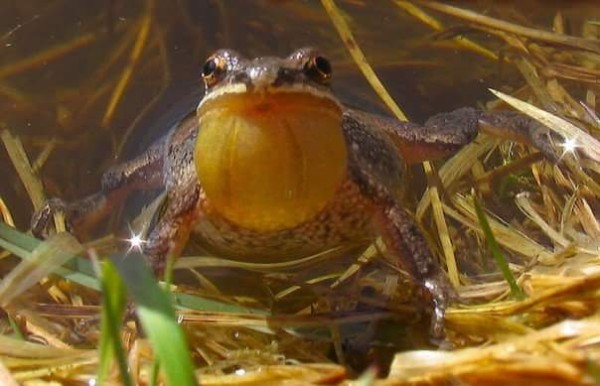 Chorus Frogs...
Chorus Frogs...
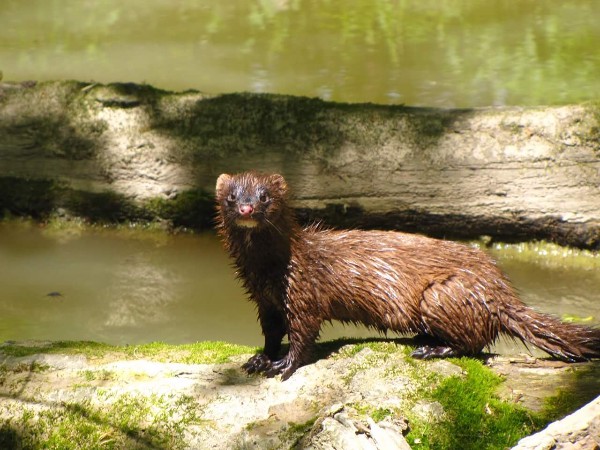 and Mink.
and Mink.
 And Us!
And Us!
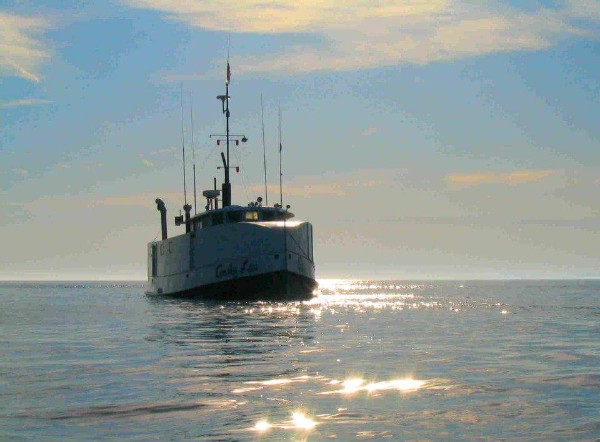
We can only know the health of specific locations by sampling, testing and analysis .
This is where Volunteers come in!
In partnership with the University of Guelph, the Lower Thames Valley Conservation Authority and the Rondeau Watershed Coalition we began in 2005, a 5 year sampling and testing program throughout the Rondeau Watershed.
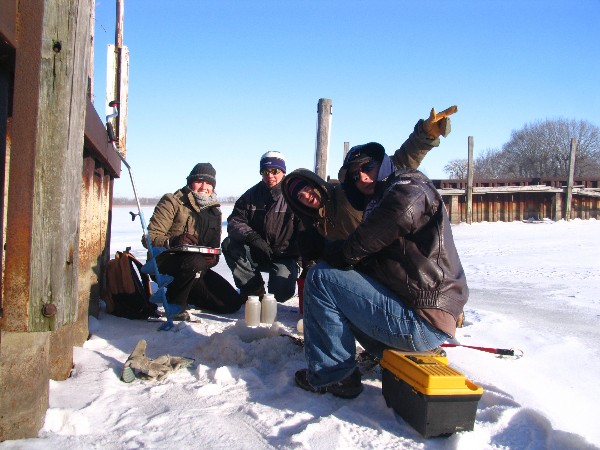 2007 sampling in Rondeau Bay
2007 sampling in Rondeau Bay
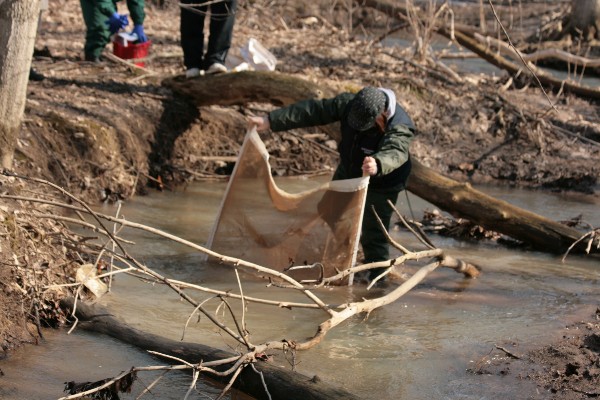 This included Field Courses in Rapid Bioassessment Protocols.
This included Field Courses in Rapid Bioassessment Protocols.
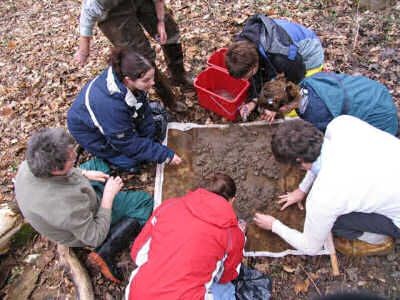 By counting the numbers and types of aquatic invertebrates a streams health and levels of pollutants can be accurately assessed.
By counting the numbers and types of aquatic invertebrates a streams health and levels of pollutants can be accurately assessed.
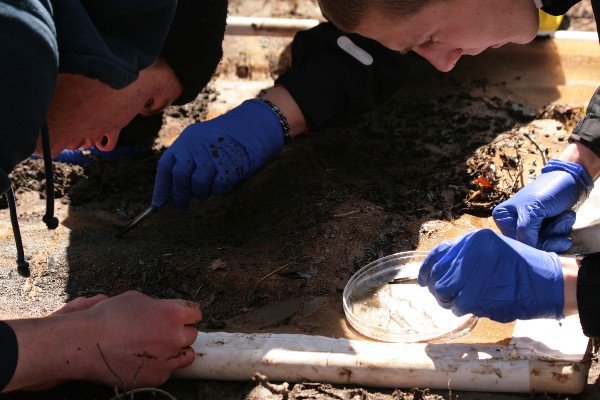
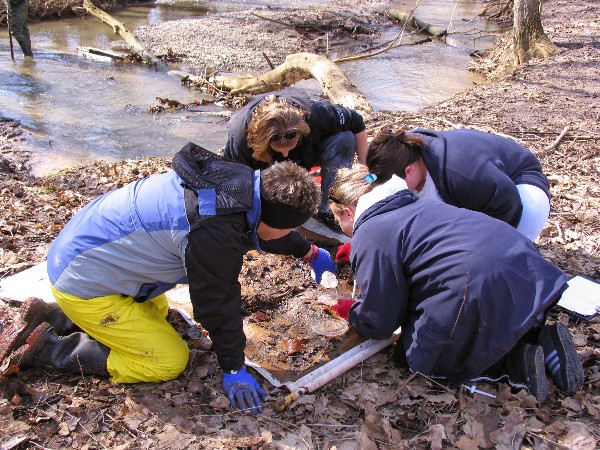
An integral part of the program is sampling and analysis.
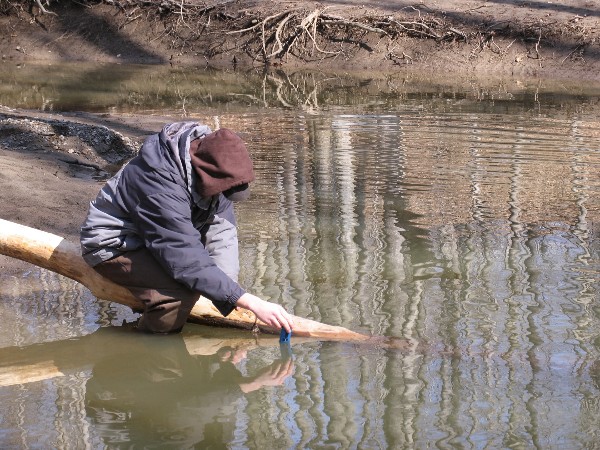
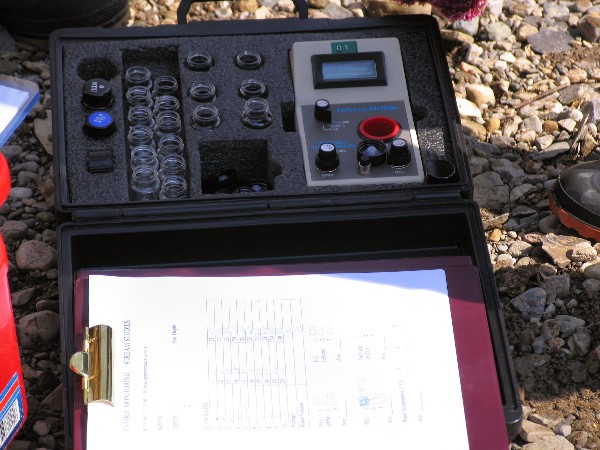
This 5 year program helped to establish a baseline for nutrients and metals within the Rondeau Watershed and Clear Creek.
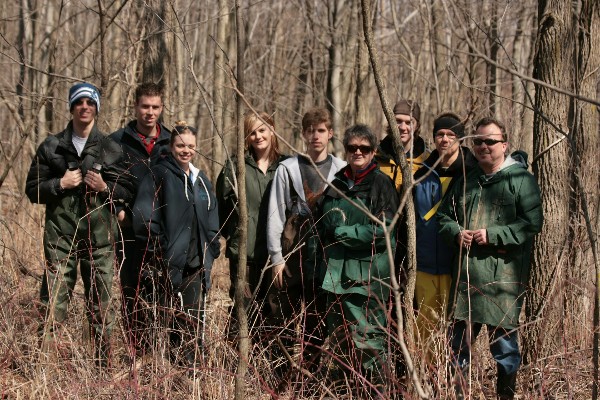
Now it's time to move into a more comprehensive Citizen Science based program that produces published evidence based assessments of local streams and rivers.
With this, we would like to ask for your help.
Citizen Based
Water Quality Monitoring
The Great Lakes Community Eco Initiative, in partnership with St Clair college Chemical Lab Tech Dept. and University of Guelph Ridgetown Campus, will conduct a stream sampling and testing program focusing on nutrient outflows into Lake Erie and Lake St Clair.
Sampling would be on a student volunteer/internship basis and would correspond to runoff events and wet seasons as well as a regularly timed series.
The scope of 1st year sampling will be the Rondeau Watershed, the Chatham-Kent, Erie Shoreline and the Thames River upstream and downstream from Chatham, for the purpose of identifying point and non-point nutrient sources in excess of background levels.
Both surface and benthic samples will be taken.
Where possible Level 2-3 Rapid Bioassessment Protocol (RBP-2) will be used in the field. RBP-3 will be used for training and expanding knowledge of species level tolerances of pollutants.
Field tests will include Temp, pH, Conductivity, Turbidity, DO as well as a site assessment that include photos, coordinates, weather conditions and impressions (anything unusual).
The focus of testing will be to measure Nitrogen (TKN), Total Phosphorus and toxic metals (Hg, Pb, Zn, Cu) as well as fecal coliforms and BODs from benthic samples.
The scope of analysis will be to identify specific point sources geophysically, chemically and biologically as well as the general health of water courses from RBP-2 results.
The data will be made publicly available in a quarterly report, published online.
http://greatlakescei.ca
Project partners will be; Great Lakes Community Eco Initiative University of Guelph Ridgetown Campus St Clair College
The project will work with the Ministry of the Environment & Climate Change, the Municipality of Chatham-Kent and the Lower Thames Valley Conservation Authority.
Funding will be through private contributions, partnership grants and other sources and will include:
Lab fees 10 samples, taken quarterly (sample bottles included). 40 total
TP/TKNColourimetric 35.00
MercuryCVAA 25.00
2-5 Elements ICP 45.00
Total per sample $105.00
Total per year 40x $105.00
4200+$630hst= $4830.00
Equipment:
1) Extech DO700 Portable Dissolved Oxygen Meter Model: DO700 Portable Dissolved Oxygen Meter - 9-in-1 Meter with Lab Performance http://www.shopextech.ca/product/extech-do700-portable-dissolved-oxygen-meter $780.00 CAD Smartphone(s) with GPS(1 donated) or Digital camera + Handheld GPS (in kind $300.00)
2) Waterproof binders for paper field sheets (donated)
(in kind $40.00)
1)20x Binocular inspection microscope for RBP3 (donated) (in kind $200.00-$400.00)
2)1m^2, 500 micron kicknets $200.00 USD+S/H
http://www.forestry-suppliers.com/product_pages/Products.asp?mi=36611
100) 4" plastic Petri dishes for RBP2(donated) (inkind$100.00)
4 tweezers
1) Laptop with current version of MS Excel (able to run macros)
(donated) (in kind $300.00)
1) Ekman dredge (AMS Shallow Water Bottom Dredge) or equivalent
$455.00 USD + s/h
1) Secchi disk(donated)($50.00)
3) Pairs hip waiders $250.00+tx
3) Pairs insulated rubber gloves $60.00+tx
Basic office supplies: Paper, printer cartridges, markers, pens, rulers etc ($200.00/Yr)
Coordinator pay:
Year to year based on funding
$5000.00 cdn/year
Sampling, Analysis, publication
Volunteer Coordination, Outreach and funding.
Mileage
Sundry expenses.
In-kind (donated):
Smartphone $300.00
Binders $40.00
Laptop $300.00
Secchi disk $50.00
Microscopes $300.00
Petri dishes $100.00
Total in kind $1090.00
___________________________
___________________________
Total project yearly goods and services
$4830.00 testing
$200.00 office
$150.00 sundry
$100.00 mileage
Total $5280.00
Project startup hardware:
Extech DO700 $900.00 cdn
RBP-2 equipment startup
Kick nets ~$300.00cdn
Ekman dredge ~$500.00cdn
Waiders&gloves~$310.0cdn
Total $1110.00
Total 1st year startup cost:
$8390.00
Total 1st year coordinator:
$5000.00
Total project 1st year costs:
$12,290.00
As funding comes in we will add additional test sites in the region.
We need your help!
Help us to provide a valuable service to environmental charities and not for profit groups.
Help us to provide third party oversight to environmental projects and to give people and governments the qualified information they need to act!
Help us make the world more aware of the importance of fresh water health.
Please donate today!
This crowdfunding platform uses Visa and Mastercard. If you would like to use PayPal please use the following Indiegogo link:
http://igg.me/at/TestWater
 Thank You
Thank You
About me:

I'm Ken Bell and live in the Municipality of Chatham Kent in Southwestern Ontario, Canada.
I am one of the founding members of the Great Lakes Community Eco-Initiative, a not for profit environmental organization.
I love the natural environment and capturing it's beauty in photographs. I also love science, particularly environmental science.
I've worked with various environmental groups including the Rondeau Watershed Coalition, Bird Studies Canada, Stewardship Kent and the Great Lakes Community Eco-Initiave and either organized or assisted with.
Earth Day Clean-ups
Environmentally Friendly Aquatic Weed Harvesting
Adopt-A-Tree
Various tree planting initiatives
Forest and Kayak tours
Organizing ALUS (Alternative Land Use Service) tours and workshops
Forest Protection Bylaw workshops
Municipal Strategic Planning
Organizing Rallys, Petitions and public outreach
Not-for-Profit establishment, organization, funraising, event planning and volunteer coordination
and a 5 year Water Quality Monitoring Program in partnership with the Rondeau Watershed Coalition, the Lower Thames Valley Conservation Authority and University of Guelph, Ridgetown Campus, Environmental Management.
Fresh water is the lifeblood of Ontario and Canada. The Great lakes and the vast majority of rivers and streams that feed them were once all drinkable and home to complex, varied and stable ecosystems for many thousands of years of human settlement after the last ice age. Over the past 150 years there has been a dramatic and devastating loss of biological diversity and degrading of water quality. By comparison, this cannot be understated. Although solutions to water pollution are technically simple and economically feasible, clean water is a political “hot potato”. Few if any are willing to accept responsibility and fewer still implement long term, research based solutions. Here, in Southwestern Ontario problems are magnified due to the low topography, rich soils, lack of forest cover, intensive urban and agricultural development and lack of effective regulation of nutrient outflows. Added to this mix are the cuts to core regulatory funding that included extensive source water testing. The regulatory system we have now does not seek to prevent pollution, but only mitigate point and non point sources after runoffs have occurred. Without monitoring, most persistent nutrient outflows go unchecked and unnoticed until secondary effects like cyanobacteria blooms turn our once drinkable waters, toxic green.
 microcystis, 200x (source Rondeau Bay)
microcystis, 200x (source Rondeau Bay)Most have read, heard or have seen the effects of excessive nutrient pollution. This leads to lakes and bays experiencing eutrophication, which is essentially a shutting down of the ecology due to lack of dissolved oxygen. Both Canada and the U.S. recognize the massive scale of this problem and have cosigned the Great Lakes Water Quality Agreement http://www2.epa.gov/glwqa
There are some huge nutrient sources like the Maumee River and Thames River that hold bi-national significance. Rondeau Bay and the surrounding subwatershed also have serious pollution problems, but aren’t an international priority.
 Priority Areas serviced by the GLWQA
Priority Areas serviced by the GLWQA Much of this area is outside of priority jurisdictions.
Much of this area is outside of priority jurisdictions.This short video, shows a very green Rondeau Bay
Microcystis from Rondeau Bay, Sept. 27th 2015

The next step is to regularly test streams and rivers within the Rondeau Watershed around Chatham Kent for nutrients.
Further below, I'm going to present a funding proposal for a Citizen-Based Water Quality Monitoring Program.
First though, some I'd like to outline some of our water quality issues, who are being affected and some of the work already completed towards solutions.
The image below shows the present extent of the Ontario stream monitoring network .
 Monitoring in the lower Southwest is sparse. Zooming into Chatham Kent (lower left)
Monitoring in the lower Southwest is sparse. Zooming into Chatham Kent (lower left)  The image shows over 4000km of streams in Chatham Kent. Many are sources of nutrient pollution(nitrogen and phosphorus) along the Thames and Sydenham Rivers, Lake St Clair, Rondeau Bay and Lake Erie.
The image shows over 4000km of streams in Chatham Kent. Many are sources of nutrient pollution(nitrogen and phosphorus) along the Thames and Sydenham Rivers, Lake St Clair, Rondeau Bay and Lake Erie.Chatham Kent is like a giant kidney, filtering into the lifeblood of our planet, Water.
This once great ecological infrastructure is being slowly dismantled.

Over 96% of the once great forests have been cleared for export driven agriculture.

Marshes and estuaries have been hardened with broken concrete waste.

Agricultural "Best Management Practices" are only occasionally applied.
 (compost dump leaching into Rondeau Bay)
(compost dump leaching into Rondeau Bay)Expensive remediation projects often remain untested and uncertified.

For those living in cities, water quality has a real value.


"The public needs to know that there is a measurable return on public investment."
That's what publishing the results of water sampling and analysis does. Using the ethos of honesty, transparency, open questioning, reliance on evidence and peer review a well informed public can drive public policy.
So let's start with some comparisons.
This is what a stream should look like. The water is clear with some tannins with lots of fish, amphibians, invertebrates and a variety of emergent plants.
 (Willow Creek)
(Willow Creek)Here's another healthy stream in Chatham Kent, Clear Creek shaded and filtered by the forest.

Some streams have higher levels of Phosphorus and Nitrogen from agricultural and urban runoff...
 (Morpeth Drain, spring)
(Morpeth Drain, spring)...while others have much higher levels.
 (3rd Concession Drain , summer)
(3rd Concession Drain , summer)Many agricultural areas have achieved a balance. Some algae, some invasives, but generally heathy.
 (Tributary of the Snye )
(Tributary of the Snye )Over time, the runoff of these nutrients can pollute Lake Erie and Lake St Clair, producing huge toxic algae blooms.

(Clearville Oct.2011)
When the algae dies during the late fall it sinks to the bottom and decays. This uses up all of the oxygen, below the "thermocline", a layer of cold water at the bottom of the lake. This decay can also produce toxic hydrogen sulfide.
The following years, when the surface waters cool in early autumn, the oxygen depleted, toxic water below the thermocline is displaced by the sinking cool surface waters.
An entire near-shore ecosystem can collapse as this 2012 photo taken in south Chatham-Kent shows.

Below you can see the 2012 progression of the swirl of black oxygen depleted, toxic water that killed nearshore fish over a 50 km stretch of the Lake Erie shoreline.

Many vertebrate species are affected by water quality. Some are very sensitive.
 Bald Eagles fish and nest along the Erie Shore and Thames and Sydenham Rivers.
Bald Eagles fish and nest along the Erie Shore and Thames and Sydenham Rivers. Red Brested Merganzers bioaccumulate aquatic toxins.
Red Brested Merganzers bioaccumulate aquatic toxins. The same with Great Egrets,...
The same with Great Egrets,... Kingfishers,...
Kingfishers,... Wood Ducks...
Wood Ducks... Chorus Frogs...
Chorus Frogs... and Mink.
and Mink. And Us!
And Us! 
We can only know the health of specific locations by sampling, testing and analysis .
This is where Volunteers come in!
In partnership with the University of Guelph, the Lower Thames Valley Conservation Authority and the Rondeau Watershed Coalition we began in 2005, a 5 year sampling and testing program throughout the Rondeau Watershed.
 2007 sampling in Rondeau Bay
2007 sampling in Rondeau Bay This included Field Courses in Rapid Bioassessment Protocols.
This included Field Courses in Rapid Bioassessment Protocols. By counting the numbers and types of aquatic invertebrates a streams health and levels of pollutants can be accurately assessed.
By counting the numbers and types of aquatic invertebrates a streams health and levels of pollutants can be accurately assessed.

An integral part of the program is sampling and analysis.


This 5 year program helped to establish a baseline for nutrients and metals within the Rondeau Watershed and Clear Creek.

Now it's time to move into a more comprehensive Citizen Science based program that produces published evidence based assessments of local streams and rivers.
With this, we would like to ask for your help.
Citizen Based
Water Quality Monitoring
The Great Lakes Community Eco Initiative, in partnership with St Clair college Chemical Lab Tech Dept. and University of Guelph Ridgetown Campus, will conduct a stream sampling and testing program focusing on nutrient outflows into Lake Erie and Lake St Clair.
Sampling would be on a student volunteer/internship basis and would correspond to runoff events and wet seasons as well as a regularly timed series.
The scope of 1st year sampling will be the Rondeau Watershed, the Chatham-Kent, Erie Shoreline and the Thames River upstream and downstream from Chatham, for the purpose of identifying point and non-point nutrient sources in excess of background levels.
Both surface and benthic samples will be taken.
Where possible Level 2-3 Rapid Bioassessment Protocol (RBP-2) will be used in the field. RBP-3 will be used for training and expanding knowledge of species level tolerances of pollutants.
Field tests will include Temp, pH, Conductivity, Turbidity, DO as well as a site assessment that include photos, coordinates, weather conditions and impressions (anything unusual).
The focus of testing will be to measure Nitrogen (TKN), Total Phosphorus and toxic metals (Hg, Pb, Zn, Cu) as well as fecal coliforms and BODs from benthic samples.
The scope of analysis will be to identify specific point sources geophysically, chemically and biologically as well as the general health of water courses from RBP-2 results.
The data will be made publicly available in a quarterly report, published online.
http://greatlakescei.ca
Project partners will be; Great Lakes Community Eco Initiative University of Guelph Ridgetown Campus St Clair College
The project will work with the Ministry of the Environment & Climate Change, the Municipality of Chatham-Kent and the Lower Thames Valley Conservation Authority.
Funding will be through private contributions, partnership grants and other sources and will include:
Lab fees 10 samples, taken quarterly (sample bottles included). 40 total
TP/TKNColourimetric 35.00
MercuryCVAA 25.00
2-5 Elements ICP 45.00
Total per sample $105.00
Total per year 40x $105.00
4200+$630hst= $4830.00
Equipment:
1) Extech DO700 Portable Dissolved Oxygen Meter Model: DO700 Portable Dissolved Oxygen Meter - 9-in-1 Meter with Lab Performance http://www.shopextech.ca/product/extech-do700-portable-dissolved-oxygen-meter $780.00 CAD Smartphone(s) with GPS(1 donated) or Digital camera + Handheld GPS (in kind $300.00)
2) Waterproof binders for paper field sheets (donated)
(in kind $40.00)
1)20x Binocular inspection microscope for RBP3 (donated) (in kind $200.00-$400.00)
2)1m^2, 500 micron kicknets $200.00 USD+S/H
http://www.forestry-suppliers.com/product_pages/Products.asp?mi=36611
100) 4" plastic Petri dishes for RBP2(donated) (inkind$100.00)
4 tweezers
1) Laptop with current version of MS Excel (able to run macros)
(donated) (in kind $300.00)
1) Ekman dredge (AMS Shallow Water Bottom Dredge) or equivalent
$455.00 USD + s/h
1) Secchi disk(donated)($50.00)
3) Pairs hip waiders $250.00+tx
3) Pairs insulated rubber gloves $60.00+tx
Basic office supplies: Paper, printer cartridges, markers, pens, rulers etc ($200.00/Yr)
Coordinator pay:
Year to year based on funding
$5000.00 cdn/year
Sampling, Analysis, publication
Volunteer Coordination, Outreach and funding.
Mileage
Sundry expenses.
In-kind (donated):
Smartphone $300.00
Binders $40.00
Laptop $300.00
Secchi disk $50.00
Microscopes $300.00
Petri dishes $100.00
Total in kind $1090.00
___________________________
___________________________
Total project yearly goods and services
$4830.00 testing
$200.00 office
$150.00 sundry
$100.00 mileage
Total $5280.00
Project startup hardware:
Extech DO700 $900.00 cdn
RBP-2 equipment startup
Kick nets ~$300.00cdn
Ekman dredge ~$500.00cdn
Waiders&gloves~$310.0cdn
Total $1110.00
Total 1st year startup cost:
$8390.00
Total 1st year coordinator:
$5000.00
Total project 1st year costs:
$12,290.00
As funding comes in we will add additional test sites in the region.
We need your help!
Help us to provide a valuable service to environmental charities and not for profit groups.
Help us to provide third party oversight to environmental projects and to give people and governments the qualified information they need to act!
Help us make the world more aware of the importance of fresh water health.
Please donate today!
This crowdfunding platform uses Visa and Mastercard. If you would like to use PayPal please use the following Indiegogo link:
http://igg.me/at/TestWater
 Thank You
Thank YouAbout me:

I'm Ken Bell and live in the Municipality of Chatham Kent in Southwestern Ontario, Canada.
I am one of the founding members of the Great Lakes Community Eco-Initiative, a not for profit environmental organization.
I love the natural environment and capturing it's beauty in photographs. I also love science, particularly environmental science.
I've worked with various environmental groups including the Rondeau Watershed Coalition, Bird Studies Canada, Stewardship Kent and the Great Lakes Community Eco-Initiave and either organized or assisted with.
Earth Day Clean-ups
Environmentally Friendly Aquatic Weed Harvesting
Adopt-A-Tree
Various tree planting initiatives
Forest and Kayak tours
Organizing ALUS (Alternative Land Use Service) tours and workshops
Forest Protection Bylaw workshops
Municipal Strategic Planning
Organizing Rallys, Petitions and public outreach
Not-for-Profit establishment, organization, funraising, event planning and volunteer coordination
and a 5 year Water Quality Monitoring Program in partnership with the Rondeau Watershed Coalition, the Lower Thames Valley Conservation Authority and University of Guelph, Ridgetown Campus, Environmental Management.
Organizer
Ken Bell
Organizer
Blenheim, ON


